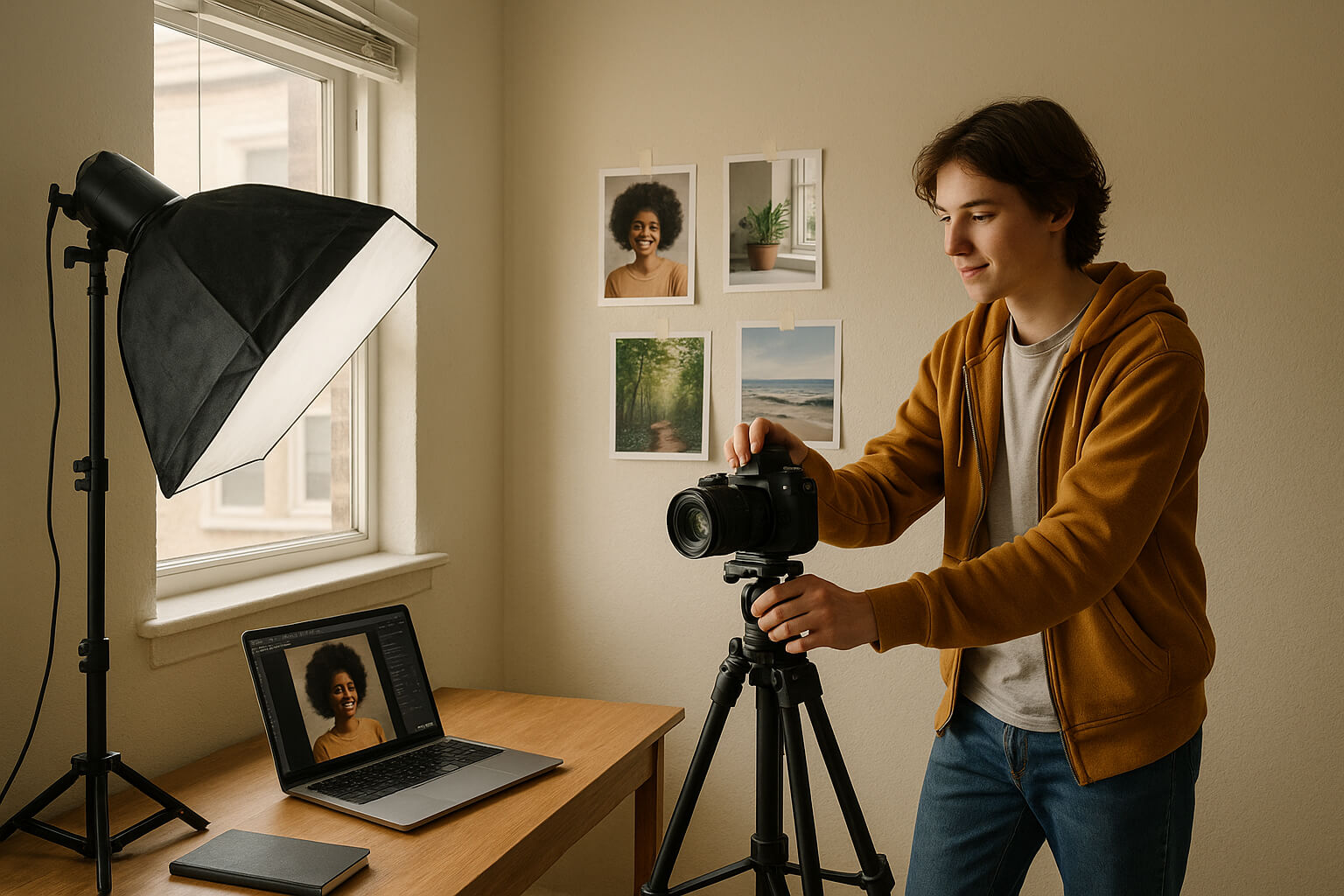May 30, 2025

Starting a photography business from scratch can seem like a daunting task, but it’s one of the most rewarding journeys you can take if you’re passionate about capturing moments through your lens. Whether you’re a hobbyist looking to turn professional, a student fresh out of school, or someone who simply wants to make a career change, this guide will break down every step needed to establish your own photography business from the ground up.
In 2025, photography is more than just an art form—it’s a thriving industry with massive potential for growth. But turning your love for photography into a successful business requires strategy, planning, and dedication. Let’s dive into the steps that will help you launch your photography business and ensure it’s positioned for long-term success.
Why It’s Crucial to Find Your Niche Early
The foundation of a successful photography business is understanding your niche. By specializing in a specific area of photography, you’ll build a focused portfolio, cater to a specific audience, and stand out from the competition. A niche helps define your brand and attracts the ideal clients for your services.
Popular Photography Niches:
Tip: Choose a niche you genuinely enjoy and that has a demand in your local area. Your passion will shine through, which will attract more clients.
Setting a Strong Business Foundation
While your photography skills are crucial, business knowledge is equally important. To succeed long-term, you’ll need to treat your photography as a business, not just a hobby.
Key Areas to Master:
Bonus: Platforms like LegalZoom and HoneyBook offer services to create templates for contracts, invoices, and other legal documents. Don’t skip this step—it’s key to running a legitimate and professional business.
Getting the Right Tools for the Job
While it’s easy to get caught up in buying high-end gear, you don’t need to invest in top-tier equipment right away. Start with quality but affordable gear that will get you through the first few shoots.
Basic Gear You’ll Need:
Tip : Rent higher-end gear (such as the Canon RF 85mm f/1.2 or a profoto light kit) for specialized shoots before committing to buying. This allows you to test equipment without the upfront cost.
Getting Hands-On Experience
Before you start charging clients, it's important to build your portfolio. A solid portfolio shows off your best work and demonstrates your skill set.
Ways to Build Experience:
Pro Tip : Your portfolio should not only display high-quality images but also demonstrate your ability to tell a story through photography. Showcase different lighting conditions, compositions, and emotional tones.
Establishing Your Digital Footprint
In today’s digital world, having an online presence is critical. It gives potential clients a way to discover your work, learn about your services, and contact you.
Essentials for a Solid Online Presence:
SEO Boost : Add location-based keywords (e.g., “Portrait Photographer in [City]”) to your website and social media profiles. Alt-text for images can also improve your Google rankings, so make sure to label your photos with descriptive keywords.
Price Your Services with Confidence
One of the biggest challenges new photographers face is setting their prices. While it’s tempting to offer low rates to attract clients, it’s important to value your time and expertise. Charging too little can undermine your professionalism.
Pricing Tips:
Tip : Transparency is key. Post clear pricing information on your website to avoid confusion and attract serious clients.
Effective Client Acquisition Strategies
Getting clients as a new photographer is often the hardest part. But once you get your first few, word of mouth and referrals will keep the ball rolling.
Strategies for Finding Clients:
Referral Power : Once you secure clients, ask for testimonials and referrals. Happy clients are your best marketing tool.
Perfecting Your Client Experience
Once you’ve booked clients, your work isn’t done yet. How you deliver your photos and communicate with your clients is just as important as the quality of the photos themselves.
Key Steps to a Professional Workflow:
Tip : Quick turnaround times and high-quality edits will ensure clients come back for more and refer you to others.
Starting a photography business from scratch is a big commitment, but with the right planning, skills, and mindset, it’s entirely possible. Focus on building a strong foundation, finding your niche, and treating your passion as a business from day one. The key is to start—perfection will come with practice, and your efforts will pay off.
By following this guide, you’ll not only build a successful photography business but also create a brand that resonates with your clients. Take the first step today!
Stay up to date with the newest tips, gear reviews, and step-by-step guides to elevate your photography journey from home and beyond.